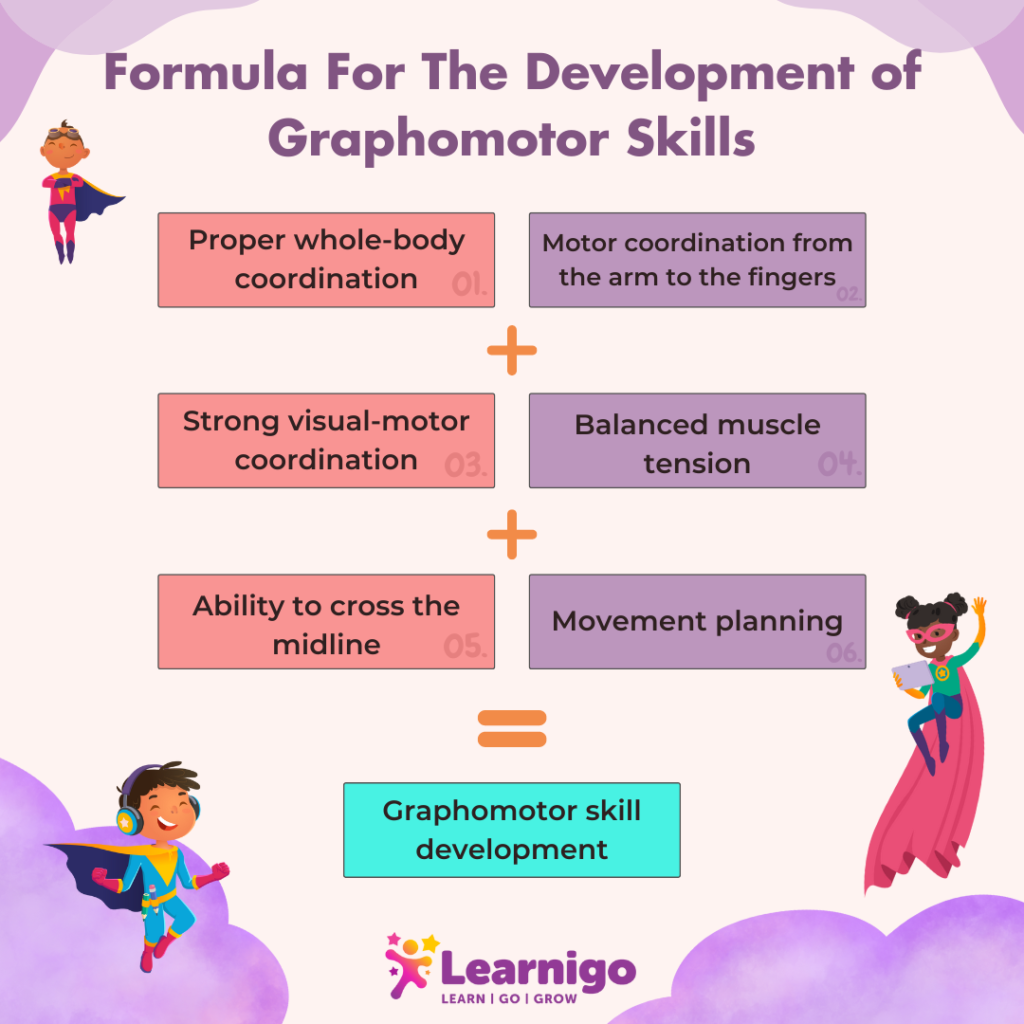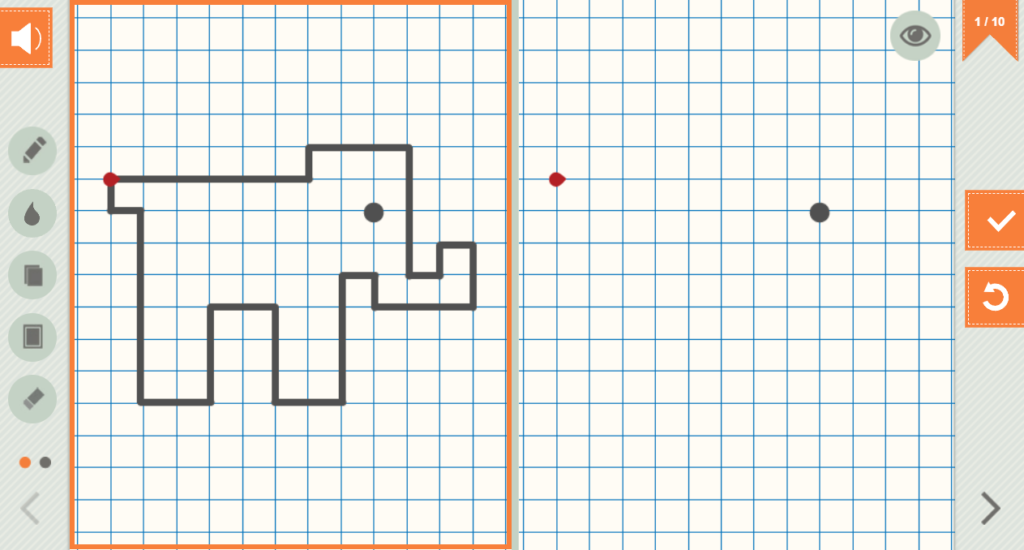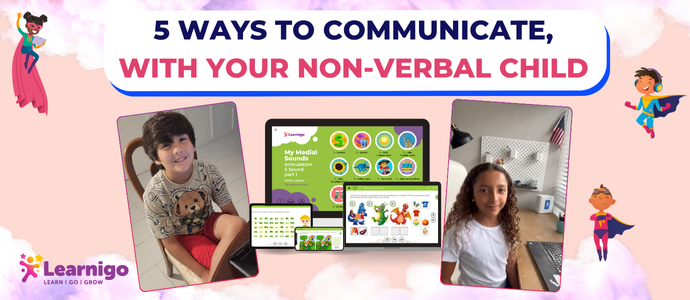5 Ways to Communicate with Your Non-Verbal Child
June 5, 2025
Thomas Talbot
May 28, 2024
0

Handwriting is fundamental to education, and its mastery is vital for a child’s academic achievement. Fundamentally, writing is a motor activity. It evolves from movement and is refined through practice. This is how we develop graphomotor skills.
Handwriting legibility, participation, and performance impact academic progression, as this skill is used throughout children and teen’s educational careers and beyond. By supporting foundational handwriting skill development, we are aiding in molding this tool used for the rest of their lives.
The Learnigo Handwriting Program was created to help develop these foundational stages of handwriting progression. Our online activities and printable worksheets focus on refining visual motor integration, grasp, visual perceptual and fine motor skills for pre-writing. The program is a precursor to skills such as tracing, copying, or writing individual letters or words.

Writing can be said to develop in the following stages:
1) Scribbling
2) Developing concepts for linearity, shape, and directionality
3) Gradual production of letters
4) Combination of letters
5) Writing isolated words
6) Combining words to write phrases and sentences
7) Learning the rules of punctuation
8) Learning and practicing different writing forms (e.g., stories, letters, etc.).
These stages are not exclusive; there may be some overlap and/or differentiated progression depending on the child.
It is more important to pay attention to the following signs that may indicate delayed fine motor coordination and visual motor skills:
If a parent or teacher is concerned with a child’s fine motor or visual motor skills, please seek professional advice from a pediatric occupational therapist for a thorough evaluation.
Signs of a child’s readiness for writing include:
Supporting your child or student’s handwriting skills can be fun and engaging. Please note some activities are dependent on age for appropriate developmental level, comprehension, attention, and safety. Here are some tips to practice and enhance pre-writing skills:
Pre-writing shapes: Have your child/student copy vertical lines, horizontal lines, circles, diagonal lines, squares, etc. Have your child/student trace these pre-writing shapes. Make it fun and engaging by using multisensory media, such as chalk, a whiteboard, paint, kinetic sand, shaving cream, etc, to make shapes
Coloring/drawing: Have your child/student sustain grasp on writing tools to fill-in pictures or draw images to strengthen grasp and fine motor skills. Some ideas include: trace pictures, complete color-by-number activities, sketch objects, copy a pattern, finish half a picture to look like the original side, etc.
Grasp/hand strength: Help develop your child’s grasp and hand strength by using small writing utensils such as broken crayons for coloring. Develop grasp patterns by using tongs,tweezers, or clothespins to pick up small objects like mini erasers or pom poms. Use putty or play-doh to hide beads or small objects to find, and have your child pinch,pull, roll out or use cookie cutters for designs!
Visual Motor Coordination: Work on developing hand-eye movements for improved fluidity and fine motor precision through activities such as connect-the-dots, mazes, cutting shapes (straight and curved lines, circle, squares), or tracing letters/numbers and shapes.
Fine motor: Develop grasp, coordination, and manual dexterity with activities such as building and interlocking toys, buttoning/zippers, lacing, stringing beads, and simple crafts with cutting and gluing. Having children help with home activities is a great option for developing fine motor and daily living skills, such as: wiping down countertops, simple cooking tasks (mixing bowl, opening containers, measuring ingredients, etc), sorting or folding laundry, vacuuming, cleaning dishes, etc.
Learnigo’s Handwriting Program is designed to practice developing pre-writing and visual motor skills for children ages 3 and up. The activities are online, meaning that children can easily work on pre-writing skills on-the-go, while strengthening their visual motor skills via single digit isolation, hand strength, hand-eye coordination, and navigating through each activity screen.
The program includes:
Learnigo’s Handwriting program was created based on the belief that children can learn and practice their skills within meaningful, engaging contexts via activities and games. The activities motivate the child to complete the task and learn while having fun.



Our comprehensive Handwriting program provides interactive exercises, colorful illustrations, and age-appropriate demands within the context of engaging activities such as puzzles, coloring, mazes, drawing, shapes, etc. These activities can be used for both 1:1 and group settings, to help create diverse and motivating learning opportunities to accommodate the needs of the school-aged population in a convenient, accessible way!
We invite you to try our free trial! There, you can sample some of the activities in worksheets included in the Handwriting program.
Access the free Handwriting lesson plan here!
If you want more personalized help, schedule a 1:1 call with our product consultants, who can show you the features of Learnigo, help you choose what’s best for your practice, and answer any questions!
We’d love to hear from you! Let us know what you like (or where we can improve) at feedback@learnigo.com.
Stay in touch by signing up for our email list to receive the latest updates such as new programs, freebies, and promotions.
Follow our socials for more updates:
References
DeFord, Diane E. “Young Children and Their Writing.” Theory Into Practice 19, no. 3 (1980): 157-62. http://www.jstor.org/stable/1477090.
Taverna, Livia, Marta Tremolada, Barbara Tosetto, Liliano Dozza, and Zanin Scaratti Renata. “Impact of Psycho-Educational Activities on Visual-Motor Integration, Fine Motor Skills and Name Writing among First Graders: A Kinematic Pilot Study. Children 7, no. 27 (2020): 2-16. doi: 10.3390/children7040027.

June 5, 2025

May 8, 2025